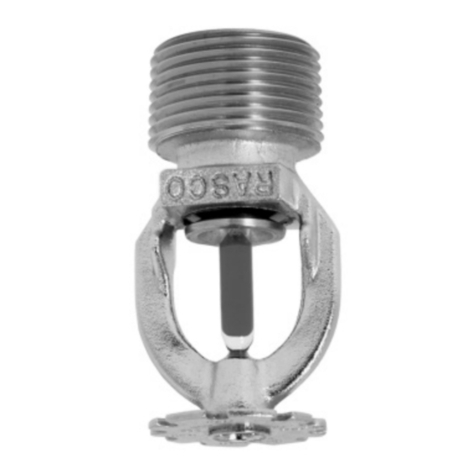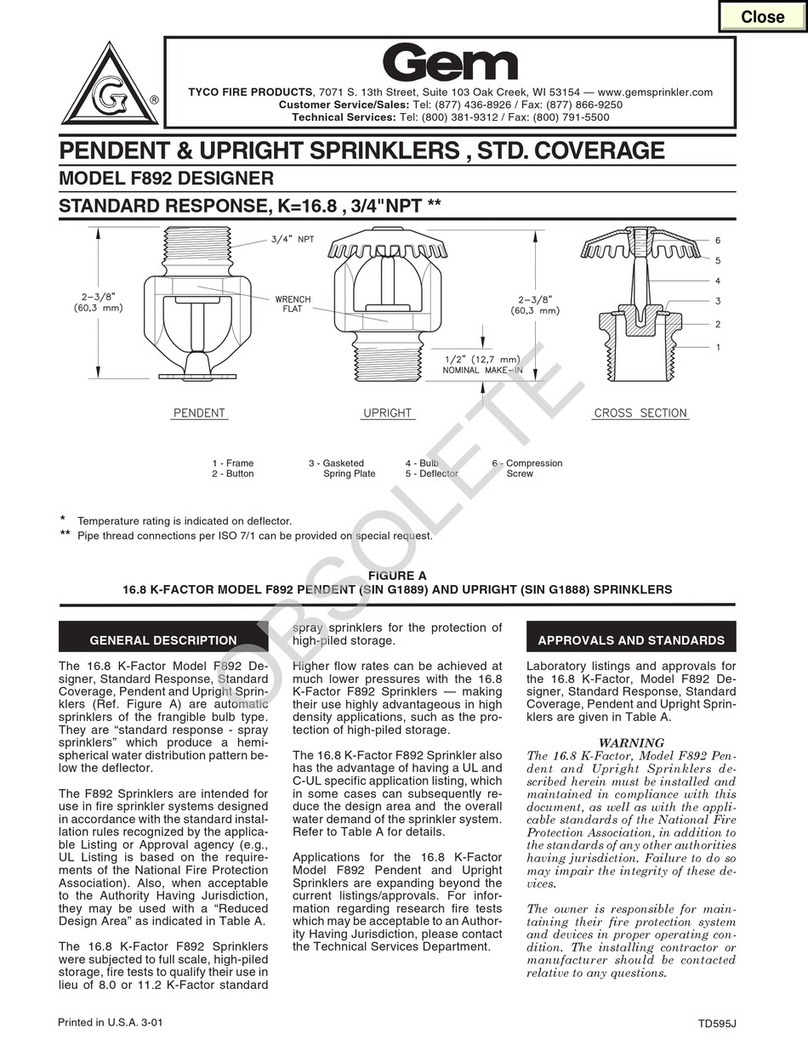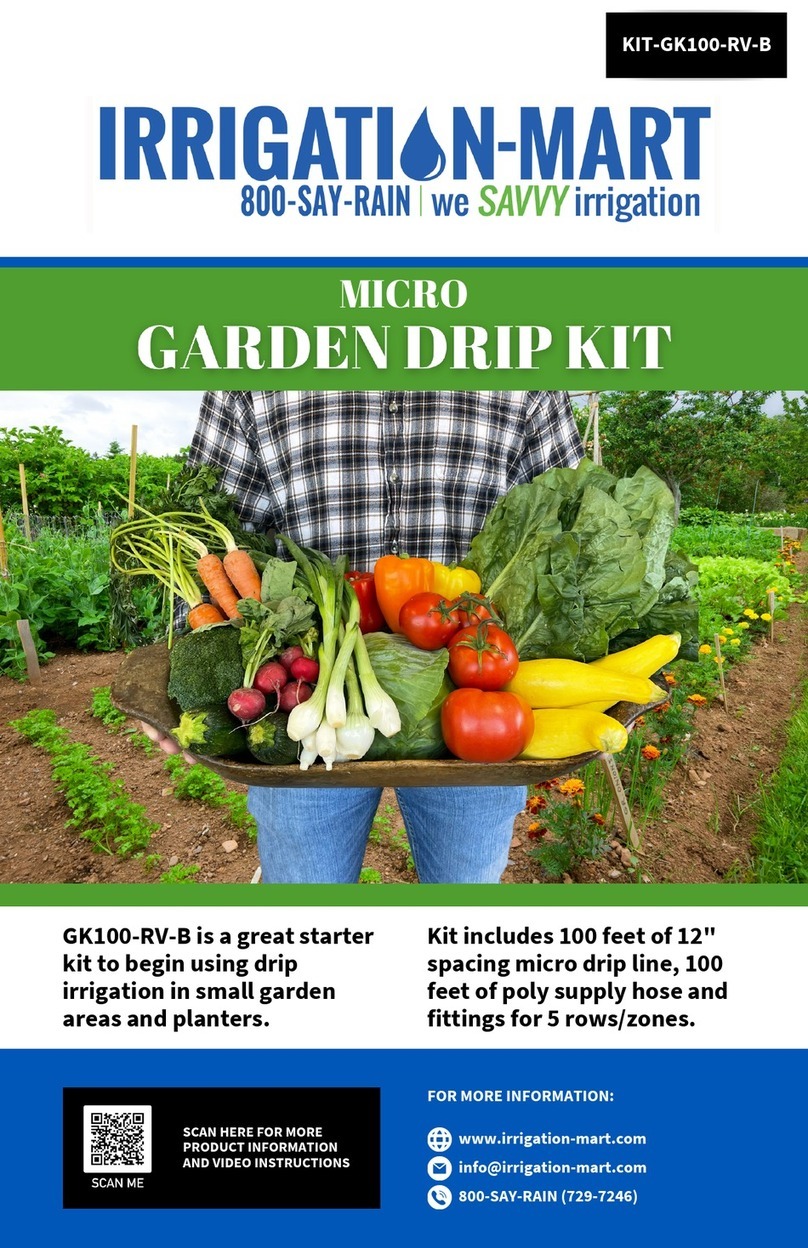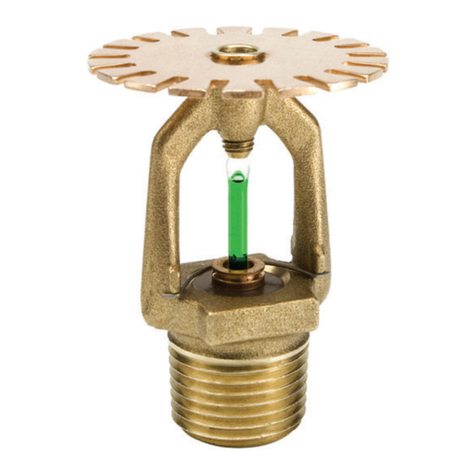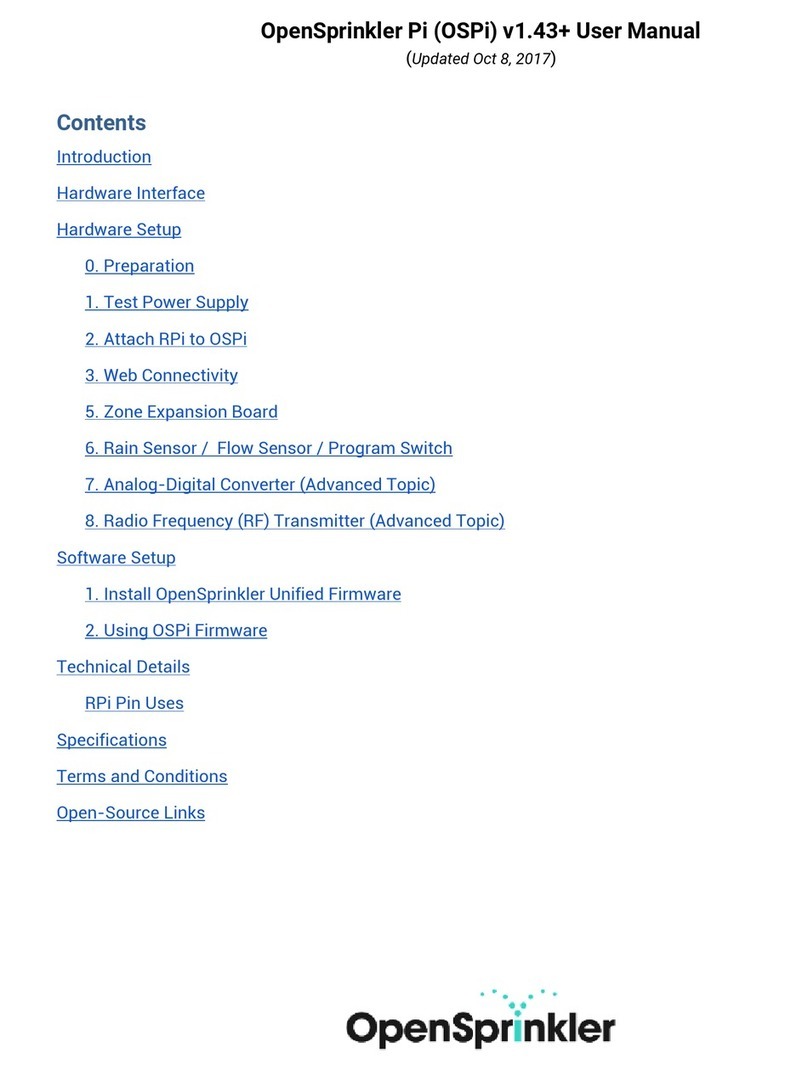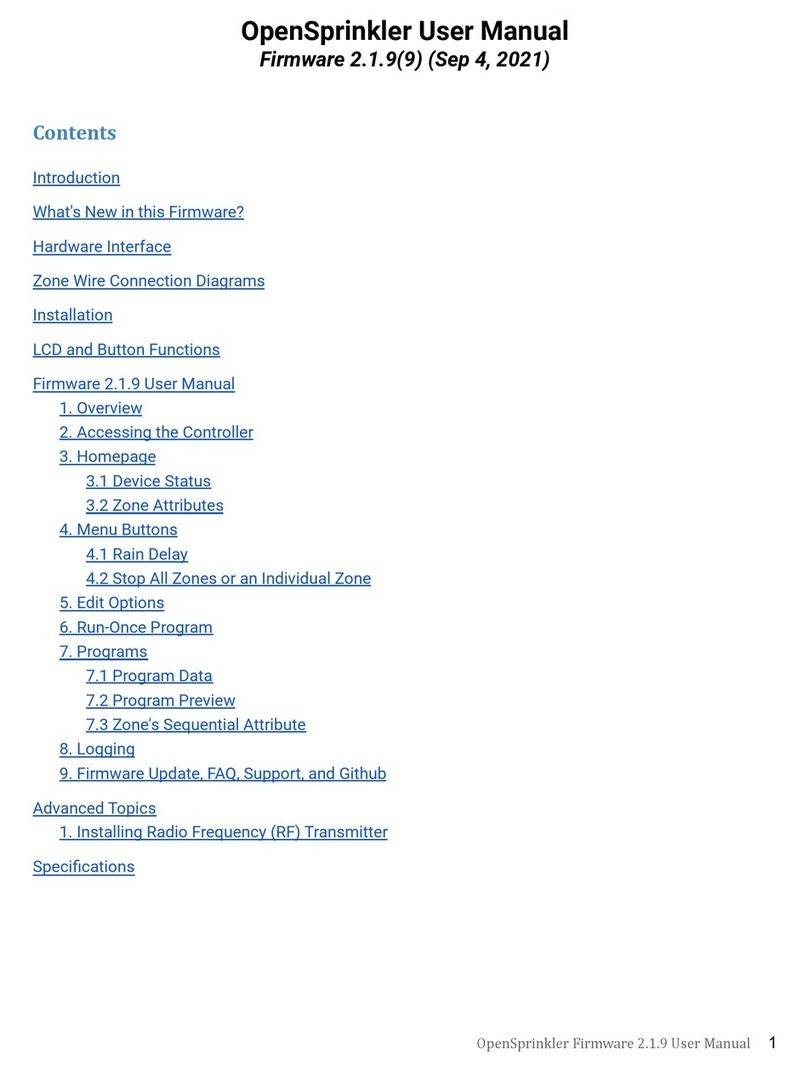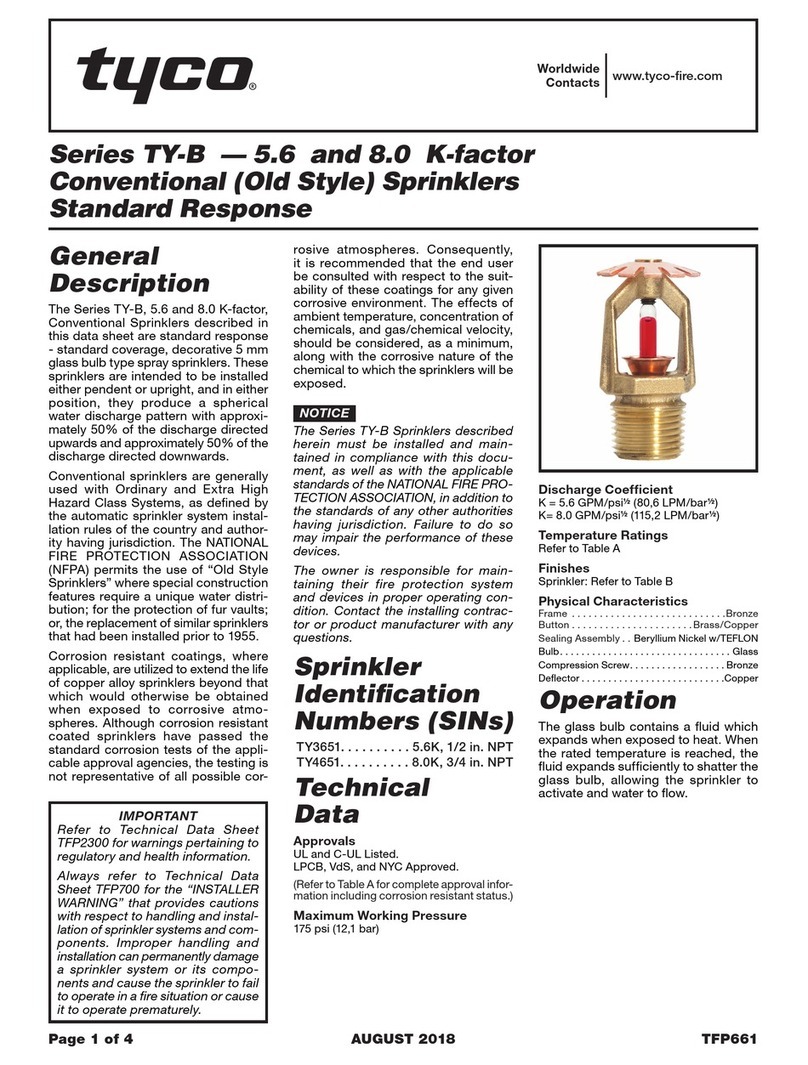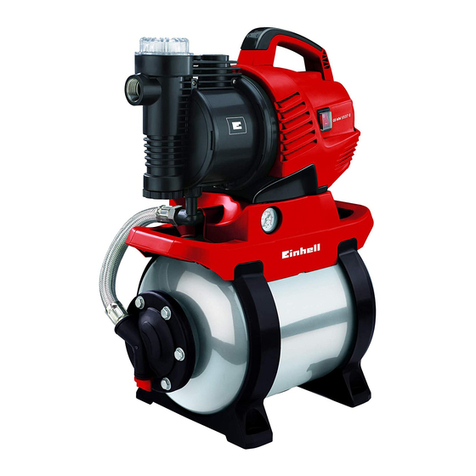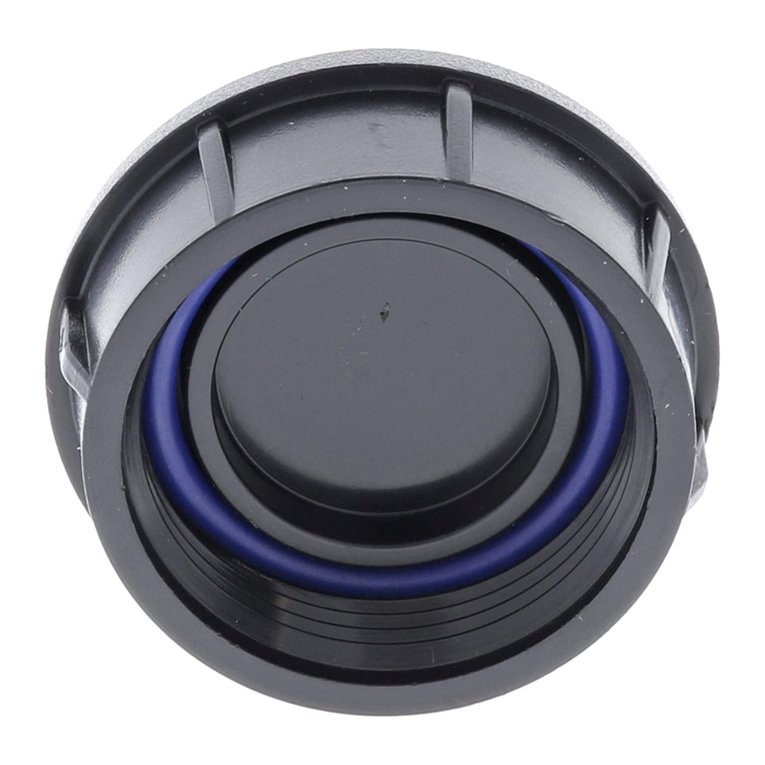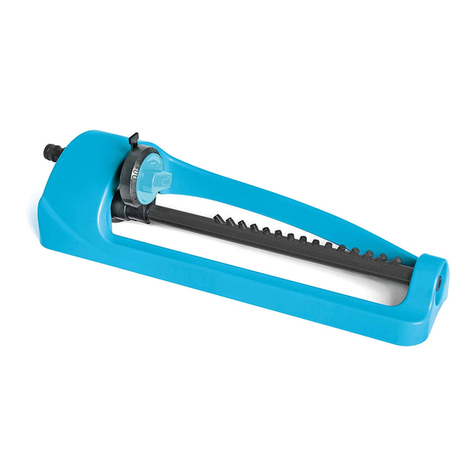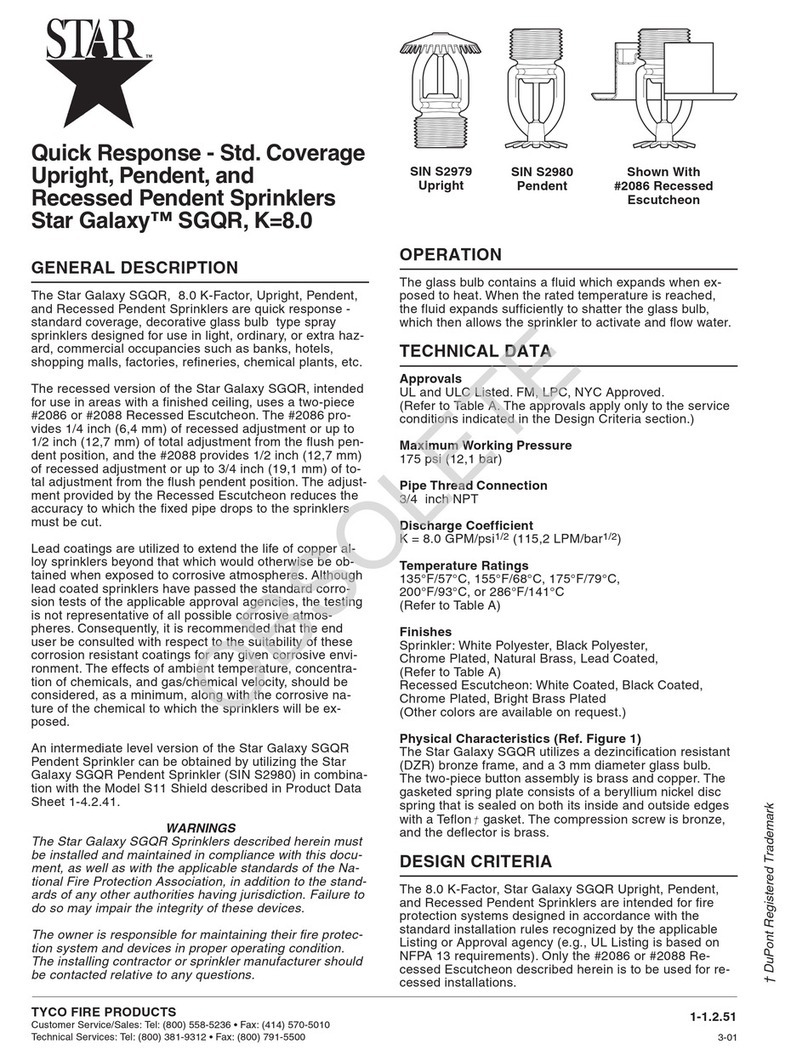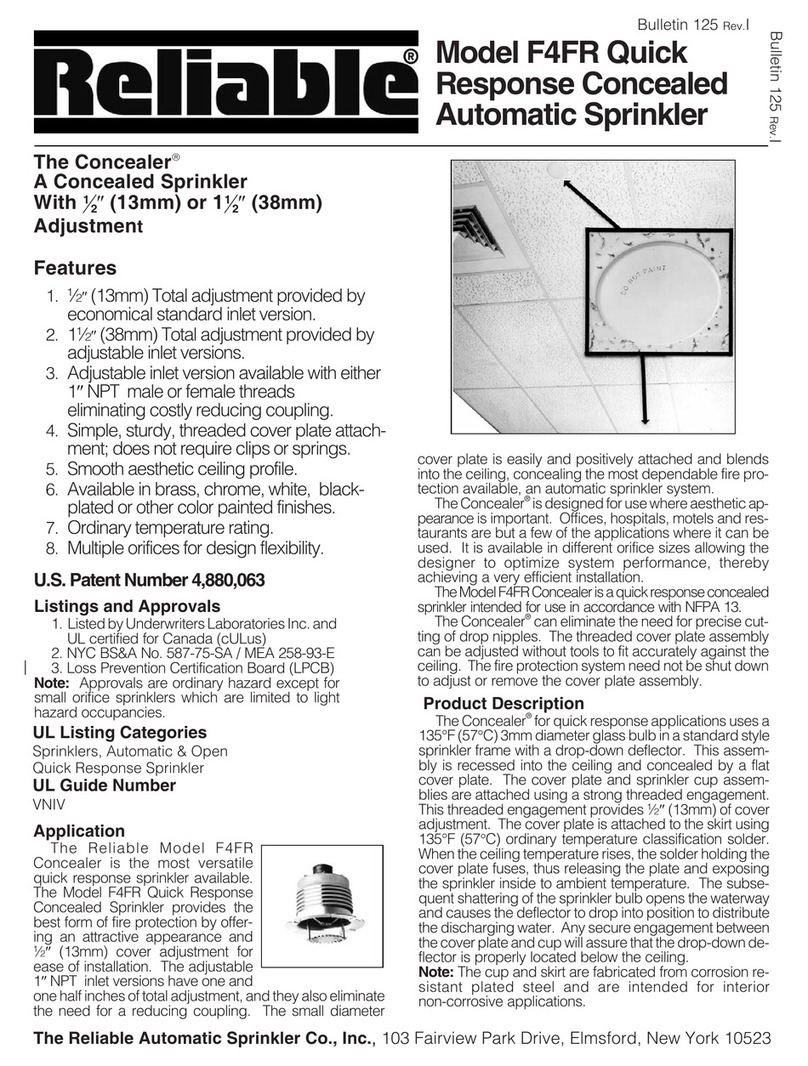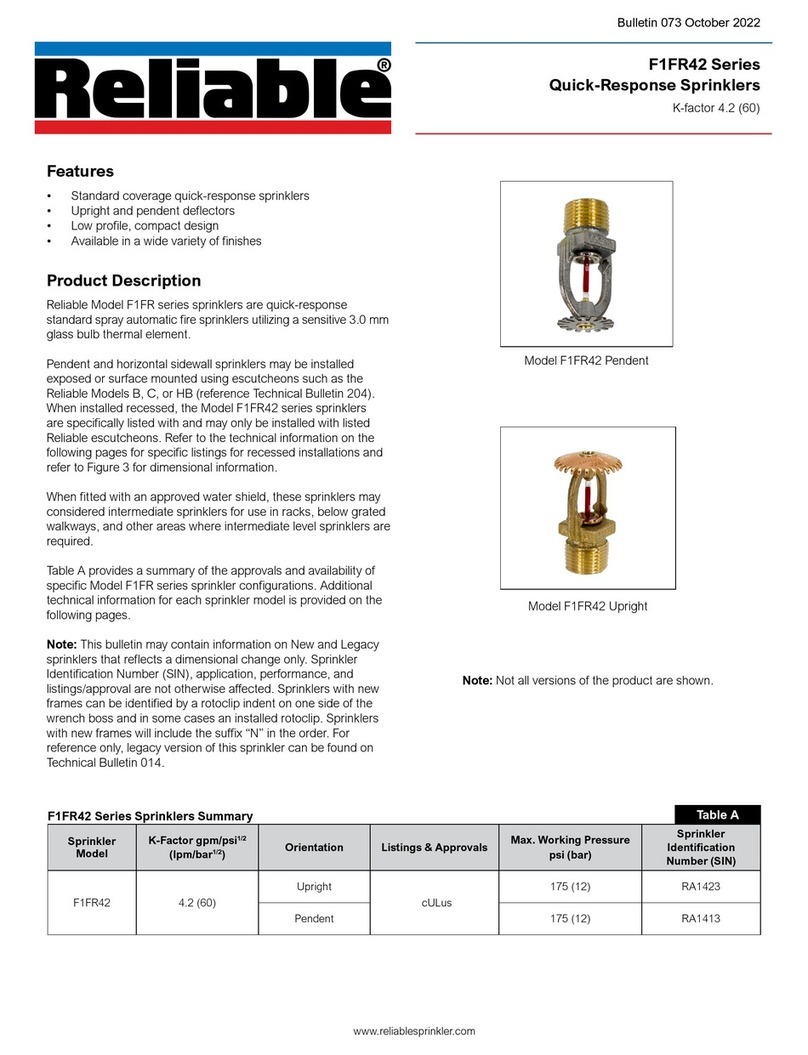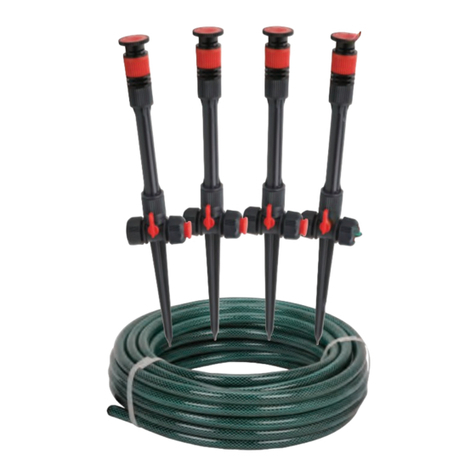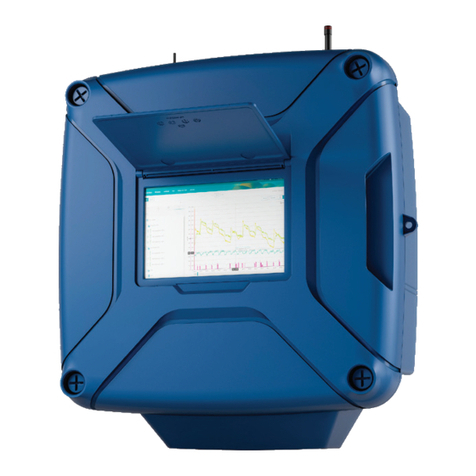Software Setup
1. Install OpenSprinkler Unified Firmware
The recommended way to install OpenSprinkler Firmware is to start from a standard Raspbian image, make sure you can
boot RPi correctly, then follow the OSPi firmware installation instructions below to install the firmware yourself:
●OSPi Firmware Installation Instructions
NOTE: some Raspbian systems installed by NOOBs will take over GPIO 4 for 1-wire interface, but that OSPi needs GPIO 4
to send control signals to the solenoid valves. If you found that the firmware runs correctly but OSPi does not turn on
valves correctly, one solution is to sudo open /etc/modules, and comment out the line containing w1-gpio, then reboot.
Another solution is to reinstall Raspbian OS from scratch without using NOOBs.
The previous OSPi pre-configured SD card image is retired -- we no longer provide pre-configured SD card image because
it's relatively easy to install a fresh Raspbian and follow the instructions above to install the OpenSprinkler firmware.
2. Using OSPi Firmware
The default firmware set to run on start-up is the OpenSprinkler Unified Firmware. It’s available at port 8080. Open a
browser, and type in http://ospi_ip:8080/ to start using the firmware, where ospi_ip is your OSPi's local IP address. Details
about the OpenSprinkler Unified Firmware can be found in the OpenSprinkler Firmware User Manual:
●OpenSprinkler User Manual
The two alternative firmwares are the Python Interval Program (written by Dan Kimberling) and the sprinklers_pi program
(written by Rich Zimmerman). Please refer to their specific Github repositories for installation and usage instructions.
If you want to write your own firmware, use the provided firmwares as starting point. In addition, in the OSPi Github folder,
there are a few demo programs that shows basic solenoid control in various programming languages.
Technical Details
RPi Pin Uses
OSPi uses the following GPIO pins on the RPi (shaded in red). The other pins are free. The power pins as well as SDA/SCL
pins can be shared with other devices. All 40 pins from RPi are mapped out in the pinout area at the upper left corner of
the circuit board. The layout of the mapped out pins match the GPIO pins. Pins use by OSPi is marked by a white outline.


